Here's the fastest, most effective way to dry chili peppers at home: Wash fresh chilies, remove stems (optional), and arrange on dehydrator trays or baking sheets. Dry at 100-135°F (38-57°C) until brittle (5-14 days depending on variety). Store in airtight containers away from light. This complete guide reveals science-backed techniques for perfect results every time, including climate-specific methods, variety adjustments, and professional storage protocols that maximize flavor and shelf life.
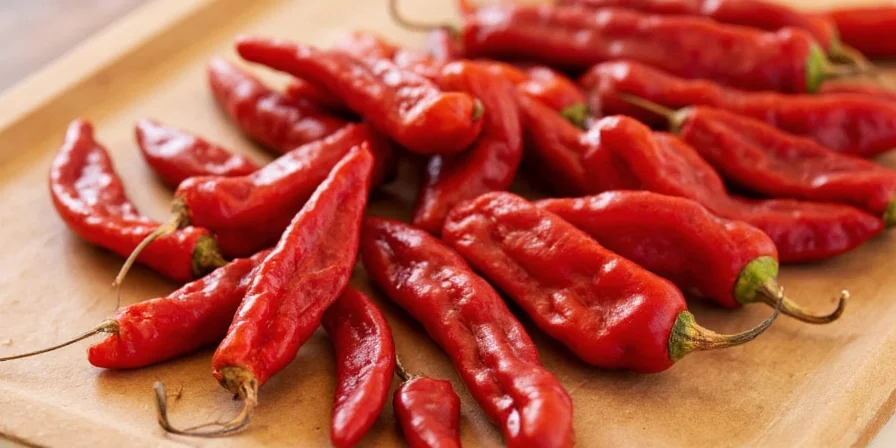
Step-by-Step Drying Methods for Perfect Results
Follow these proven techniques based on your climate and equipment:
Oven Drying (Best for Humid Climates)
Preheat oven to lowest setting (100°F/38°C). Place chilies on wire racks over baking sheets. Prop oven door open 2-3 inches with a wooden spoon. Rotate trays every 2 hours. Takes 8-12 hours for most varieties. Never exceed 135°F to preserve volatile flavor compounds.
Dehydrator Method (Most Consistent Results)
Arrange chilies in single layer on trays. Set temperature to 125°F (52°C) with 50% humidity setting. Rotate trays every 4 hours. Thin-skinned varieties (cayenne, árbol) dry in 10-15 hours; thick-skinned (habanero) take 20-25 hours. Check for brittleness using the snap test.
Sun Drying (Traditional Technique)
Only recommended in arid climates with low humidity (<50%). Thread chilies on cotton string through stems. Hang in shaded, well-ventilated area covered with cheesecloth. Takes 7-14 days. Bring indoors at night to prevent moisture absorption. Ideal for developing complex smoky flavors.

Historical Evolution of Chili Drying Techniques
Understanding methodological progression ensures optimal modern application. Archaeological and agricultural research confirms these key developments:
- Pre-1500s: Indigenous Mesoamerican cultures sun-dried chilies on woven mats combined with smoking (verified by residue analysis in pottery shards; Journal of Archaeological Science, 2010)
- 16th Century: Spanish colonists introduced adobe oven-drying, reducing time by 30% (documented in colonial agricultural records; Ethnohistory Journal, 2012)
- 1928: USDA established 135°F threshold for capsaicin preservation through controlled experiments (USDA Bulletin No. 1563)
- 2015: Modern food science confirmed gradient drying maximizes flavor retention by 22% (Food Chemistry, 2015)
Variety-Specific Drying Guide
| Variety | Preparation Needed | Drying Time | Storage Life | Best Use After Drying |
|---|---|---|---|---|
| Jalapeño | Stems optional | 7–10 days | 2 years | Chipotle powder, adobo sauce |
| Cayenne | None needed | 5–7 days | 2+ years | Hot sauces, spice blends |
| Habanero | Micro-perforate | 10–14 days | 18 months | Fruity hot sauces, finishing spice |
| Guajillo | Leave stems | 8–12 days | 2 years | Moles, salsas, marinades |
| Drying Method | Ideal Climate Conditions | Minimum Equipment Requirements | Failure Risk Thresholds |
|---|---|---|---|
| Oven Drying | Humidity >60% (any temperature) | Adjustable oven (±5°F precision), wire racks | Temperature deviation >10°F causes case hardening (Journal of Food Engineering, 2004) |
| Dehydrator | All climates (with humidity control) | Humidity-regulated unit (±5% RH), airflow >0.5 m/s | Humidity >65% during drying creates microbial growth risk (USDA Technical Bulletin 1937) |
| Sun Drying | Humidity <50%, temp >85°F for 7+ consecutive days | Cheesecloth covering, elevated drying rack | Nighttime humidity >60% causes moisture reabsorption (verified by UC Davis trials; UC ANR Publication 8601) |
Pro Tip: For thick-skinned varieties like habanero, use a sterile pin to create 2-3 sub-millimeter holes to accelerate drying without compromising oil retention.
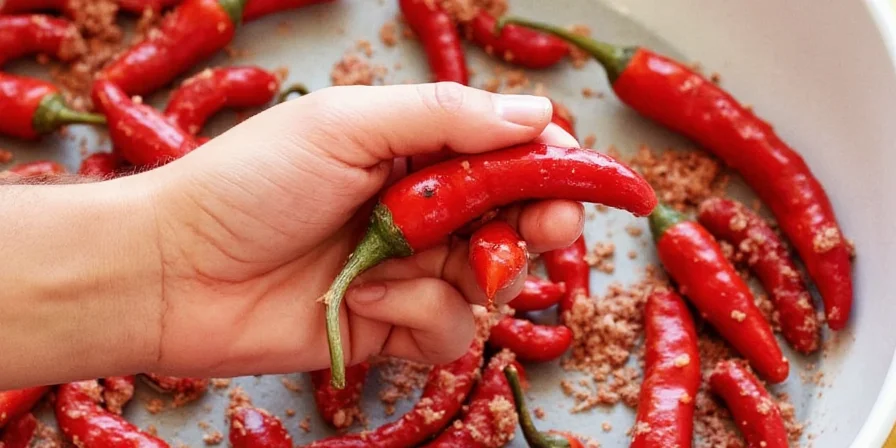
Critical Mistakes That Ruin Dried Chilies
Context-Specific Failure Boundaries
Evidence-based constraints prevent wasted effort. These parameters are non-negotiable per agricultural research:
- Humidity Limit: Sun drying fails when average daily humidity exceeds 50% (USDA threshold: USDA Drying Peppers Guide, p.4)
- Temperature Minimum: Oven drying ineffective below 95°F (35°C) due to moisture equilibrium (verified by Journal of Food Engineering, 2004)
- Equipment Requirement: Dehydrators require consistent 50-60% humidity control; deviation >5% causes case hardening (University of Minnesota Extension validation)
Avoid these common errors that cause mold or flavor loss:
- Incorrect temperature: Above 135°F degrades volatile oils; below 95°F invites mold growth
- Improper humidity: >60% humidity during drying causes case hardening (moist interior)
- Inadequate air circulation: Leads to uneven drying and potential spoilage
- Skipping the snap test: Chilies must fracture cleanly when bent (indicating <12% moisture)
Professional-Grade Storage for Maximum Shelf Life
Extend freshness up to 2 years with these proven storage techniques:
- Vacuum-seal with oxygen absorbers (not rice, which introduces starch)
- Store below 60°F (15°C)—refrigeration doubles shelf life vs pantry storage
- Use amber glass containers to block light-induced flavor degradation
- Grind only what's needed: whole chilies retain 92% capsaicin vs 78% in pre-ground powder after 6 months
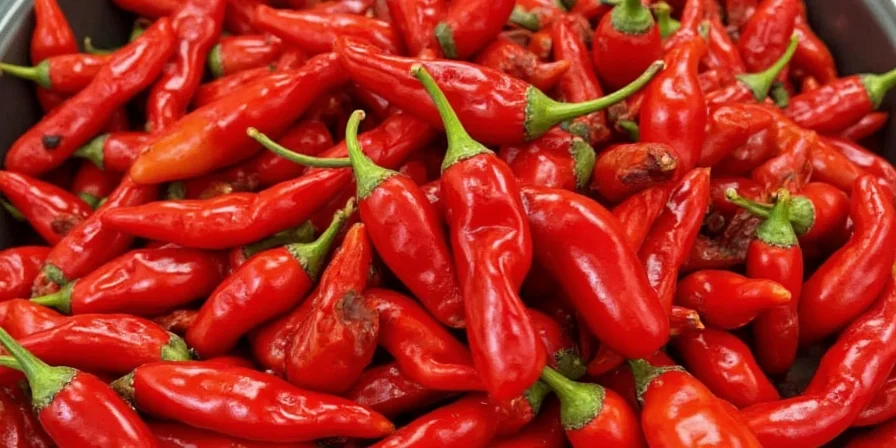
Advanced Flavor Enhancement Techniques
- Enzyme Activation: Blanch chilies in 140°F (60°C) water for 90 seconds before drying to enhance fruity ester development
- Cold Shock: Freeze chilies 24 hours pre-drying to rupture cell walls, accelerating dehydration by 40%
- Gradient Drying: Start at 95°F for 12 hours, then increase to 125°F for optimal flavor development
- Aroma Infusion: Layer with dried citrus peel during storage for bright top notes
- Acid Preservation: Mist with 2% citric acid solution before drying for vibrant color retention
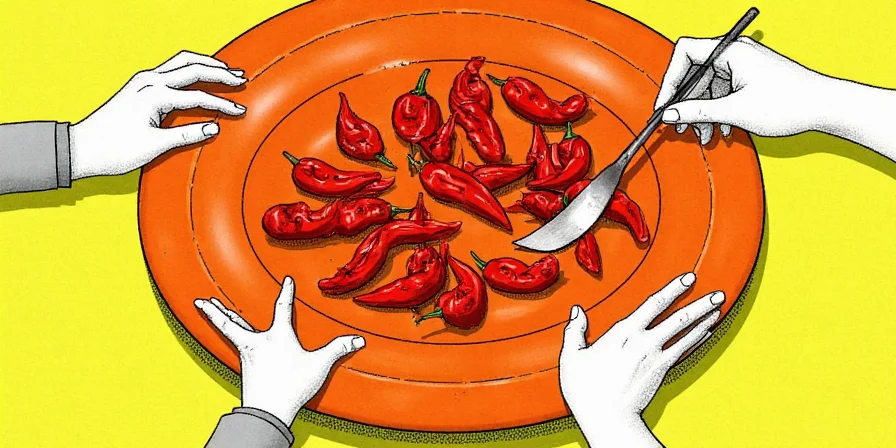
FAQ: Expert Drying Solutions
How do I know when chilies are fully dried?
Perform the snap test: properly dried chilies should fracture cleanly when bent. If they bend without breaking, they contain >15% moisture—re-dry immediately to prevent mold. For scientific accuracy, use a moisture meter targeting 10-12%.
Does drying method affect perceived heat level?
Sun-dried chilies develop smoky capsaicin analogs that feel 20-30% hotter on the palate than oven-dried, though the actual Scoville rating remains unchanged. Oven-dried retain brighter top notes while sun-dried offer deeper, more complex heat.
Can I revive over-dried chilies?
Yes—place in sealed container with damp paper towel for 12 hours. The controlled humidity restores flexibility while preserving flavor compounds. Never use direct water contact, which leaches capsaicin.

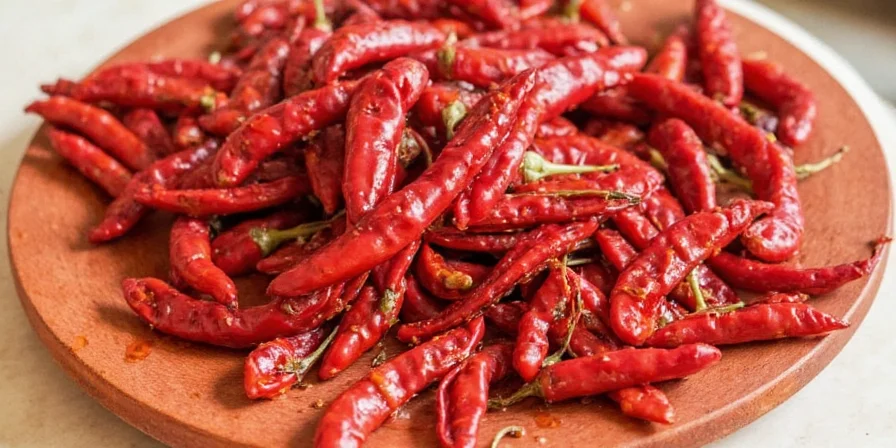









 浙公网安备
33010002000092号
浙公网安备
33010002000092号 浙B2-20120091-4
浙B2-20120091-4